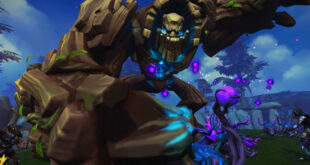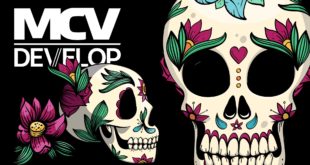Ahead of the formal launch of BAME in Games later this year, MCV talks to its first chair Kish Hirani about ethnic diversity in the games industry and what we can expect from the new advocacy group.
You were appointed the first chair of BAME in Games last year – can you tell us a bit about your profile and background?
I will mark 21 years in the games industry this year. I started as an engineer, swiftly attaining technical director or equivalent roles at development studios and publishing houses like Acclaim, THQ, and BBC Worldwide Multimedia to name a few.
I moved to platform holders some ten years ago, starting with Microsoft then settling at Sony PlayStation for eight years as their head of developer services, developing and managing resources for all developer support-facing technical activities including PlayStation VR, covering the historic PAL regions.
Currently, I am a freelance consultant, mentor and advisor in the games industry. I took up the voluntary position of the first Chair of UK advocacy group Black, Asian, Minority Ethnic (BAME) in Games, promoting ethnic minority diversity in the video games industry last June, when we soft launched.
What made you want to get involved in this advocacy group?
The key motivation was seeing the stats from Creative Skillset published in March 2016 (see ‘Diversity in numbers’ below): the proportion of people with BAME heritage employed in games, four per cent, is ranked joint fifth out of seven creative media sectors with only animation showing a lower percentage.
After our initial meeting, I took interest in considering the position with the emphasis that it has to be a positive advocacy group showing the richness diversity brings in any work environment and especially in the games creation process. It makes creative sense, it makes business sense and games creators can truly represent the diversity of those who play games.
I also emphasized that it has to be an advocacy group with everyone in the industry– irrelevant of the pigmentation of their skin colour – promoting diversity rather than a group of minorities in the games industry representing and advocating diversity.
What are you making your key priorities?
At this soft launch stage, and given we are all volunteers with no funding, we want to prioritise providing a clear point of contact for companies and organisations – including government sector – seeking to promote ethnic diversity in the games and entertainment sectors. We currently meet on a quarterly basis – open to everyone – and we are seeking more volunteers for sub-committees or task forces and engaging with relevant government sectors for a formal launch.
Will BAME in Games address the whole industry – publishing, media and retail – as well as the usual push for development?
Certainly, we are all the video games industry; but we’re also volunteers, so we have to be realistic, too. We’ll have to see in which parts of the industry we can attract individuals; in order to advocate and bring awareness in their specialist area. Right now pretty much all of us are from a games development background.
How would you evaluate the state of BAME diversity in the industry at the moment? Do you think things have improved or gotten worse these past few years?
According to the stats published by Creative Skillset, it has pretty much remained static around the four per cent mark from their 2014 and 2016 survey. Personally, I think the games industry is still a relatively young industry and as such benefitted from not having inherited certain cultural or ethnic stereotypes that historically existed in well-established sectors during the industrial revolution.
Yet it formed some other stereotypes especially when it came to gender diversity. The industry has always been inclusive as far as ethnicity goes so it is a matter of why ethnic minorities are still not actively applying and succeeding in pursuing a career in the games industry.
"The proportion of people with BAME heritage employed in games is ranked joint fifth out of seven creative media sectors."
Kish Hirani, BAME in Games
So what can be done as an industry to encourage people from different backgrounds to join?
As mentioned, the industry has always been inclusive as far as ethnic diversity goes so we have great role models across the globe that can encourage applicants; especially those who may assume they will not fit in the industry for whatever reason.
The general perception of the industry is at an all-time-high, especially for a sector that’s historically been dismissed as not a ‘proper job’. So just bringing awareness to us being a credible career choice is an easy encouragement we all can continue to do. The industry suffered for talent, irrelevant of diversity, as it wasn’t considered as a credible career choice until some 15-20 years ago.
If we add to that the population’s percentage of ethnic minorities, as well as certain cultural stereotypes within those minority families, who want their kids to pursue a career in the, perception-wise, high paying jobs like doctors, lawyers, accountants, and so on, it led to a lack of diversity which will now take a lot longer to balance out.
The issue is also onscreen, with very few BAME characters depicted in games – how can we address this?
Funding incentives for depicting diverse characters may help certain type of games but a very easy way of addressing it is making a point by buying games that have put effort into depicting diverse characters.
Also, actively pointing out to developers and publishers via social media, forums and traditional media that their favourite titles lack diversity.
Gender diversity is an increasing topic of discussion in the industry, but BAME diversity less so…
Certainly, and it needs to be that way. It is disgraceful that a woman in 2017 is likely to get less pay for the same job than a man would for that same position.
What are your ultimate expectations for BAME in Games?
That’s easy. Like any advocacy organisation – to close it down as we will not need it. In the short term, we need to raise awareness and increase the BAME percentage in the industry. That would be a great accomplishment for us.
Diversity in numbers
The latest report on BAME representation was conducted as part of Creative Skillset’s Employment Survey for Creative Media Industries in 2015, published March 2016.
“Just seven per cent of those employed in seven creative media sectors in UK – TV, radio, post production, film, animation, VFX and games – are men and women of colour compared to 13 per cent of the UK population,” BAME in Games’ first chair Kish Hirani comments. “There are more people with BAME heritage employed in the TV sector in the UK – 5,200 – than all the six other creative media sectors combined. Four sectors of the creative media industry – film, post production, games and animation – employ one in 20 people of colour or less, compared to all other industries where the average level of employment is ten per cent, or one in ten. The proportion of people with BAME heritage employed in games at four per cent is ranked equal fifth out of the seven sectors, with only animation showing a lower percentage.”

 MCV/DEVELOP News, events, research and jobs from the games industry
MCV/DEVELOP News, events, research and jobs from the games industry



